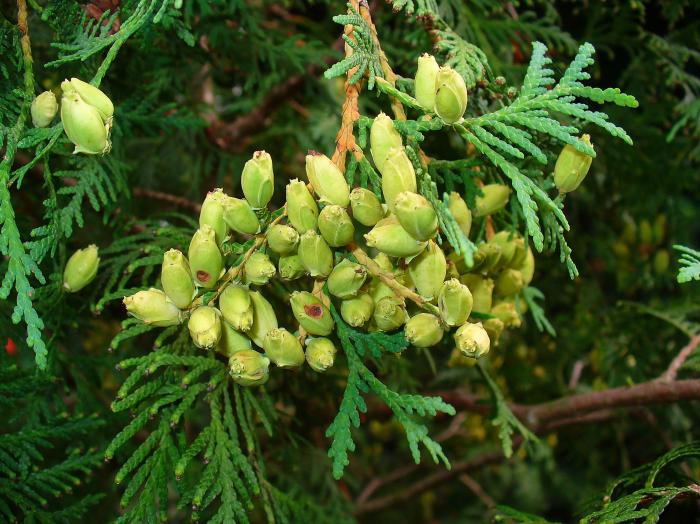Thuja occidentalis
American Arborvitae, Eastern White

Description
Thuja occidentalis, commonly known as American arborvitae, Eastern arborvitae, Eastern white cedar or Northern white cedar, is a dense, conical to narrow-pyramidal (sometimes maturing to broad-pyramidal), often single-trunked, evergreen tree that is native to eastern and central Canada south to northern Illinois, Ohio and New York with scattered populations further south in the Appalachians to North Carolina. Mature trees may reach 40-60' tall in the wild over time, but in cultivation typically grow much smaller to 20-30' tall. Scale-like, aromatic, yellow-green to green foliage appears in flattened sprays. Red-brown bark will exfoliate on mature branches and trunks. Grow in average, medium moisture, well-drained soils in full sun to part shade. Somewhat wide range of soil tolerance, but prefers moist, neutral to alkaline, well-drained loams. Intolerant of dry conditions. Best in full sun, but generally appreciates some light afternoon shade in hot summer climates. Avoid full shade where foliage density will substantially decrease. Avoid exposed, windy sites.
Plant Type
Tree, Conifer, Shrub
Height Range
12-25', 25-40'
Width Range
1-3', 3-6', 6-12'
Flower Color
n/a
Flower Season
n/a
Leaf Color
Green, Yellow Green
Bark Color
Brown, Red
Fruit Color
n/a
Fruit Season
n/a
Sun
Full, Half
Water
Medium
Growth Rate
Moderate
Soil Type
Sandy, Loam, Rocky
Soil Condition
Average, Rich, Well-drained, Moist
Soil pH
Neutral, Basic
Adverse Factors
n/a
Design Styles
Formal, Japanese, Ranch
Accenting Features
Fragrance, Silhouette
Seasonal Interest
n/a
Location Uses
Background, Park, Parking Lot
Special Uses
Filler, Hedge, Screen, Mass Planting, Wind Break
Attracts Wildlife
n/a
Water Saving Tip:
Check your irrigation controller once a month, and adjust as necessary.
Most plants require only one-third as much water in winter as they do in summer.